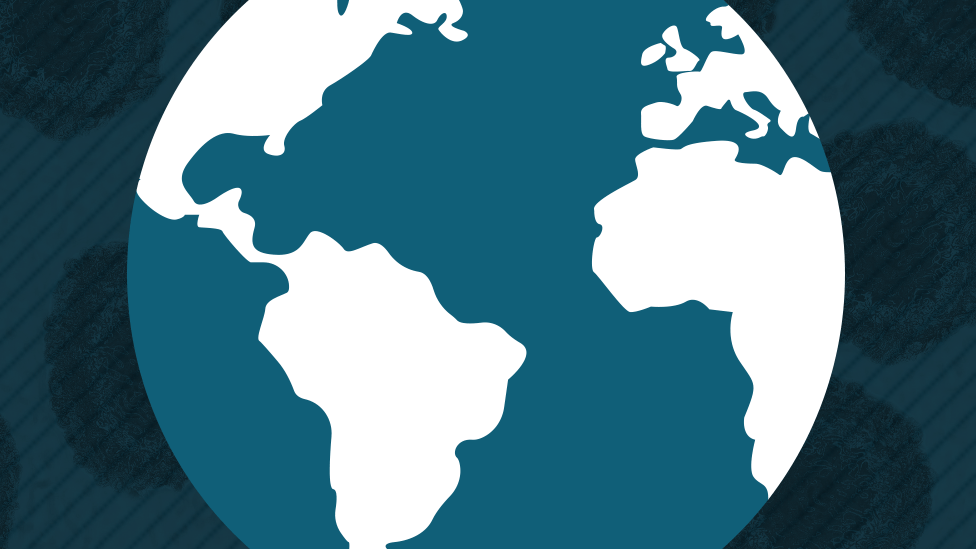Covid-19 in the US: Bleak winter ahead as deaths surge
- Published

Americans should start being vaccinated against coronavirus in the coming days, providing some light at the end of the tunnel for the country with the highest death toll in the world.
But the good news about vaccines comes as the US is experiencing its toughest period of the pandemic so far.
The number of daily reported deaths is at a record high while both the number of infections and admissions to hospital continue to rise.
Robert Redfield, the head of the US Centers for Disease Control and Prevention, has warned that the next few months will be "the most difficult in the public health history of this nation".
So why is the outlook so bleak and what will next year bring?

Deaths are surging across the US
The number of daily reported deaths began to increase substantially in November and it has now passed 3,000 for the first time since the start of the pandemic.
The highest number of deaths in one day during the spring outbreak, which was limited to states in the Northeast, was just below 2,800.
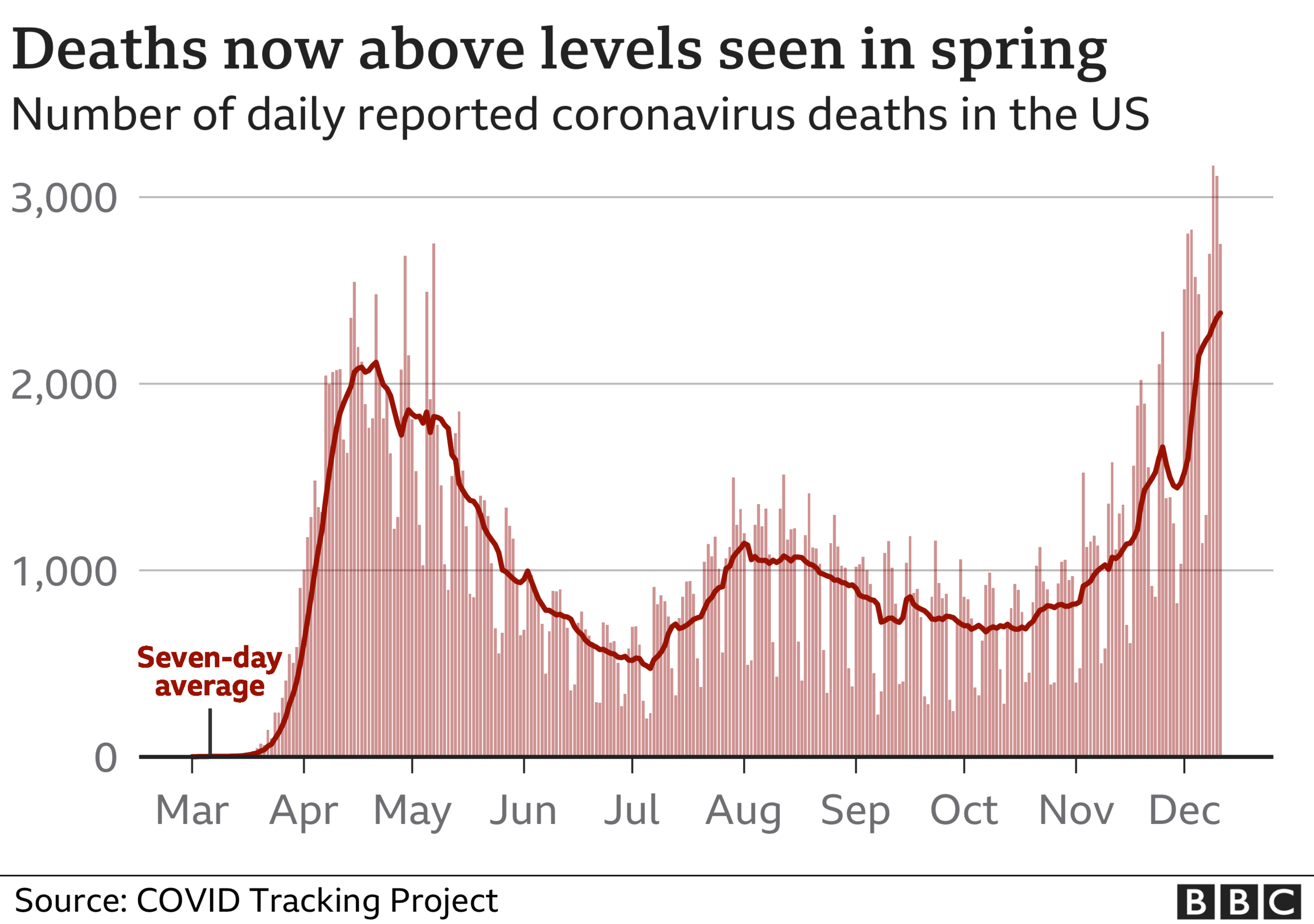
If you ignore the recent slight drop in the seven-day average, which was caused by the limited reporting of data around the Thanksgiving holiday on 26 November, the trend does not look good.
Earlier this week, Dr Redfield told, external the Council on Foreign Relations think-tank that he expected the daily death toll to be higher than the 3,000 killed in the 9/11 attacks "probably for the next 60 to 90 days".
At the moment, the US death toll stands at nearly 300,000 - the highest figure in the world and about a fifth of the global total of confirmed coronavirus deaths.

Cases are still rising quickly
One of the reasons the death toll is expected to rise at such a fast rate is because the number of infections is also still on the way up.
With more than 15 million confirmed cases, the US has the highest number of infections in the world and the spread shows no sign of slowing down.
The chart below shows that the current wave is still growing at a faster rate than the previous two - although some of that is down to increased levels of testing.
During the spring wave, testing was mostly limited to confirming cases in people who were already in hospital, meaning the true scale of that outbreak wasn't fully captured.
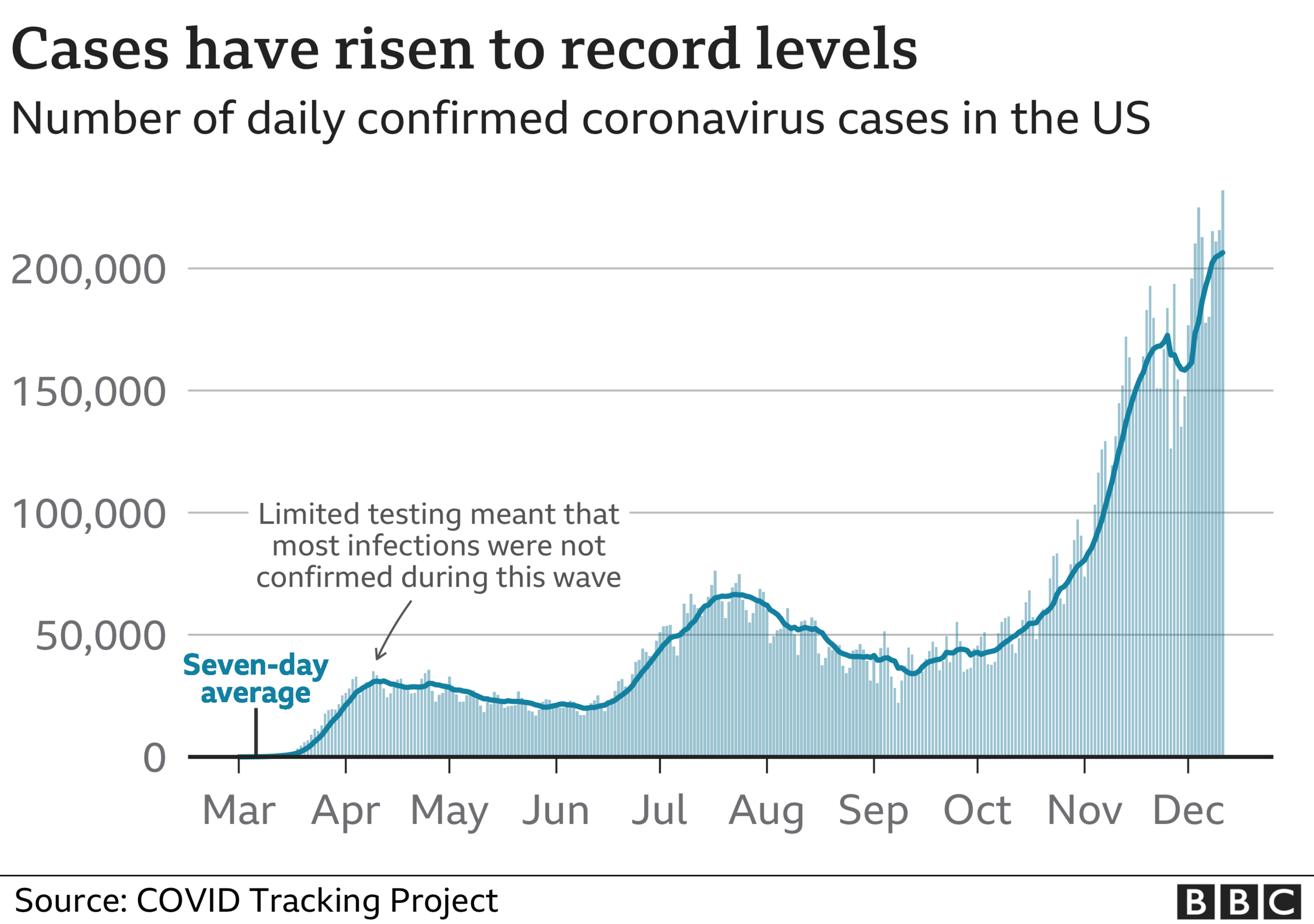
The latest data compiled by the COVID Tracking Project, external shows the number of cases was up by nearly 30% week on week, while testing was up by just 10%.
Dr Anthony Fauci, the top US infectious diseases expert, has said we'll have to wait until mid-December to gauge what effect Thanksgiving gatherings have had on the numbers.
But he warned, external that Christmas will inevitably bring another increase in travelling and social contacts, which will lead to "a very challenging period".

The strain on hospitals is growing
Because of the change in the level of testing, a better way to compare waves is to look at the number of people being admitted to hospital because of Covid-19.
This data shows that roughly the same number of people across the US were in hospital during the first and second waves of the outbreak.
But the current wave has seen far more Covid-19 patients admitted to hospital - more than 100,000 at the moment.
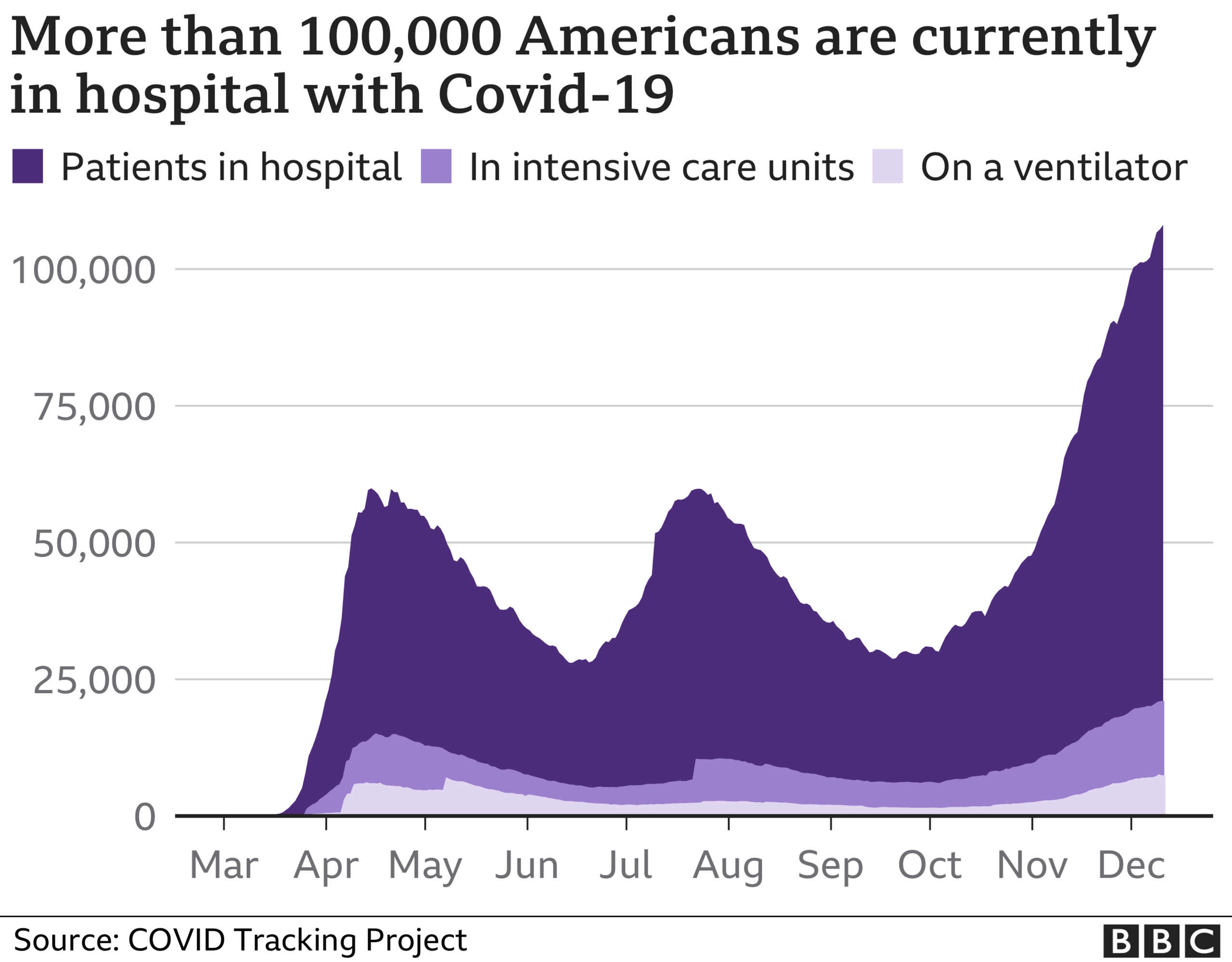
The number of patients with coronavirus who are in intensive care units and on ventilators is also rising, which is another worrying sign - although treatments have improved since the spring outbreak.
In a recent study, external in New York, researchers found that the probability of death among coronavirus patients was down 18 percentage points from the spring, in part due to new treatments and better knowledge of the virus among medical staff.
But these improvements are dependent on the quality of care being received, which is put at risk when hospitals reach capacity and staffing levels are put under pressure.
Recent analysis of hospital admissions data by the New York Times, external found that one in 10 Americans lived in an area where intensive care units were either full or fewer than 5% of beds were available.

This wave is hitting every US region
The current wave of infections is the third one to hit the US this year but the one major difference is that it's affecting every region at the same time.
The spring wave was predominantly in the Northeast, while the summer one hit the South and West hardest.
This time around, it was the Midwest where infections rose fastest - but every region has seen a spike in cases.
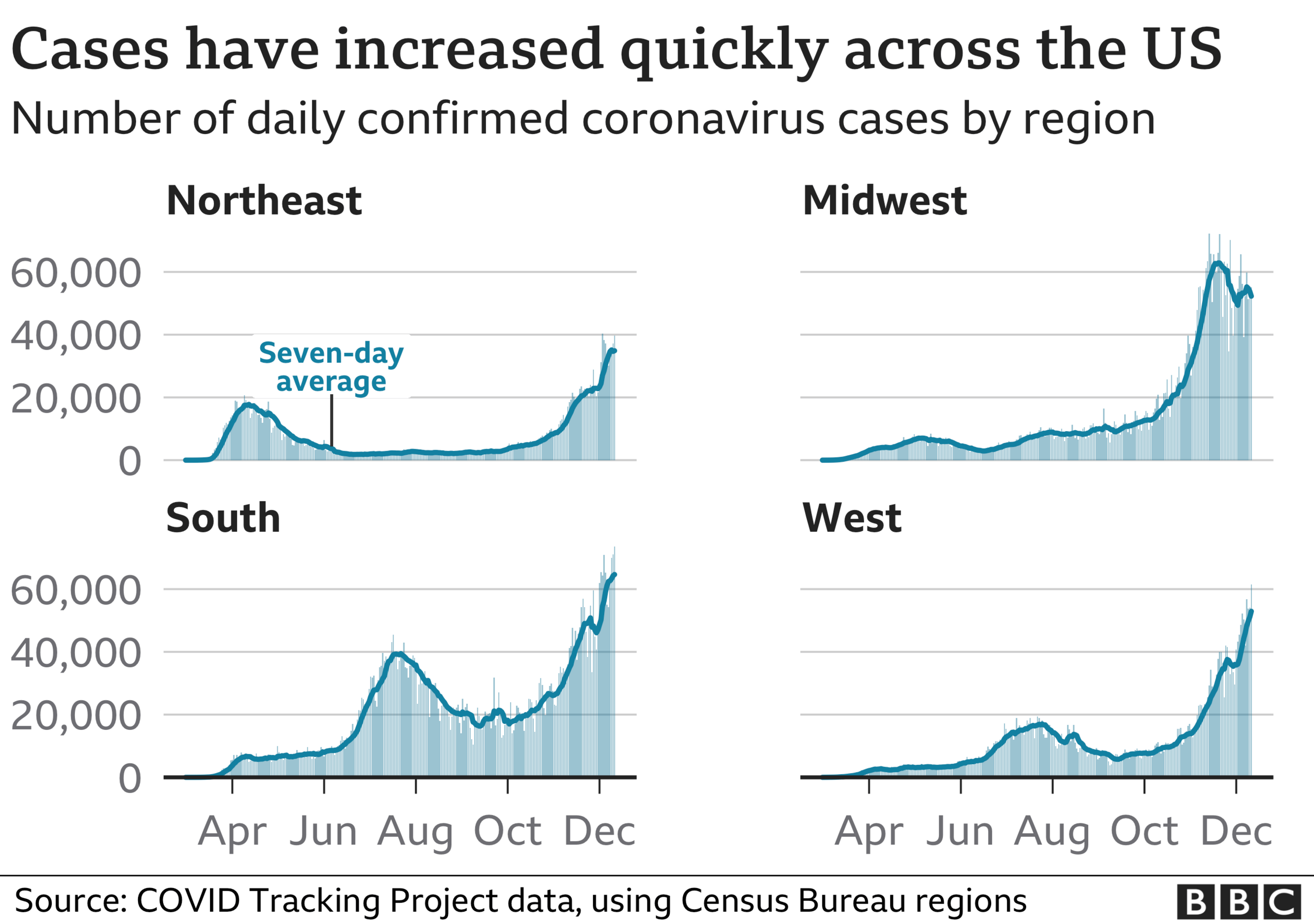
The Covid Exit Strategy group, external, which is run by public health experts, ranks the progress each state is making in tackling the outbreak. At the moment, every state but Hawaii is categorised as having an "uncontrolled spread".
The only region where the numbers are looking somewhat positive is the Midwest, although we'll have to wait another week or so to see whether cases continue to fall once the post-Thanksgiving data stabilises.

Some normality by end of 2021?
Several states have brought in increased measures in recent days in a bid to reduce the spread of the virus, including California and New York.
In Pennsylvania, Democratic Governor Tom Wolf banned dining inside restaurants and introduced limits on social gatherings indoors, saying, external: "We need to slow the spread right now in order to save lives. If we don't, we're going to be in big trouble." Mr Wolf is himself isolating after testing positive for Covid-19.
Dr Fauci has called on Americans to "hang on" until the vaccines arrive, saying key public health measures like social distancing and the wearing of face masks are crucial over the next few months.
US Covid vaccine: Three key questions answered
President-elect Joe Biden has vowed to make tackling the pandemic a top priority when he enters the White House on 20 January.
He has set a goal of vaccinating 100 million people - nearly a third of the US population - within the first 100 days of his administration.
Dr Fauci, who has accepted a role as Mr Biden's chief medical adviser, said, external last week that if 75% of Americans can be vaccinated by next summer, the country may be able to return to "some degree of normality".
However, a recent survey, external by the Pew Research Center suggests that may be a challenge, with only 60% of people saying they would probably or definitely get the vaccine.
Related topics
- Published5 July 2022
